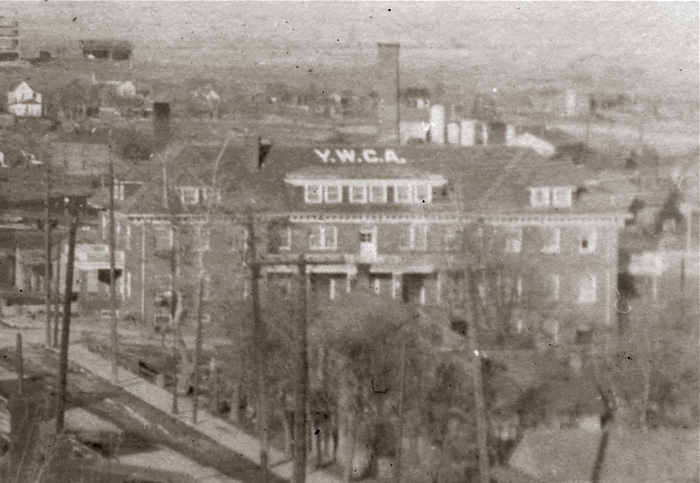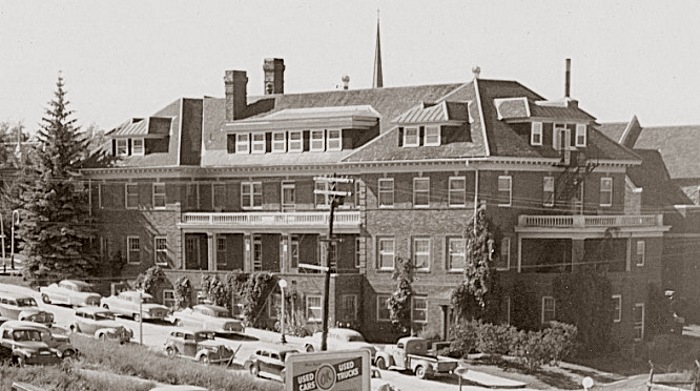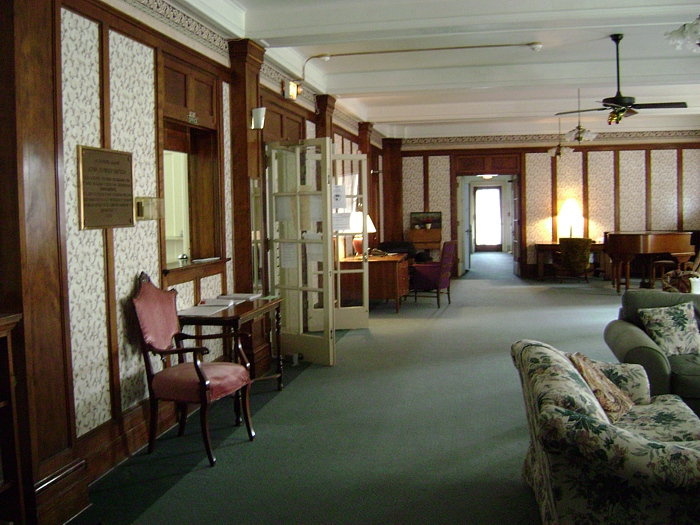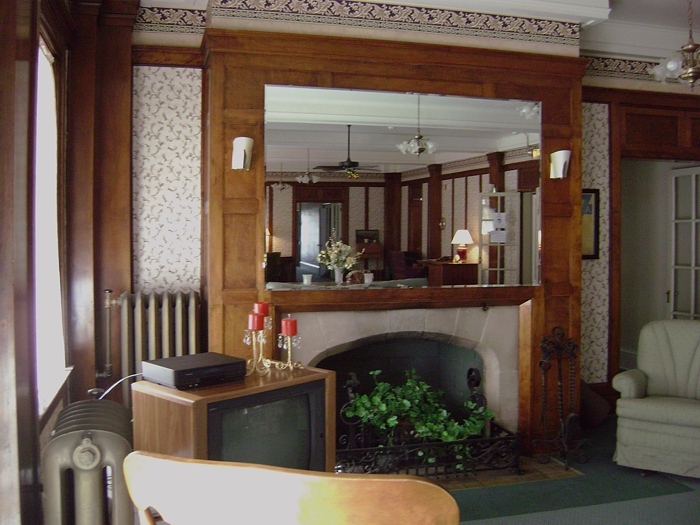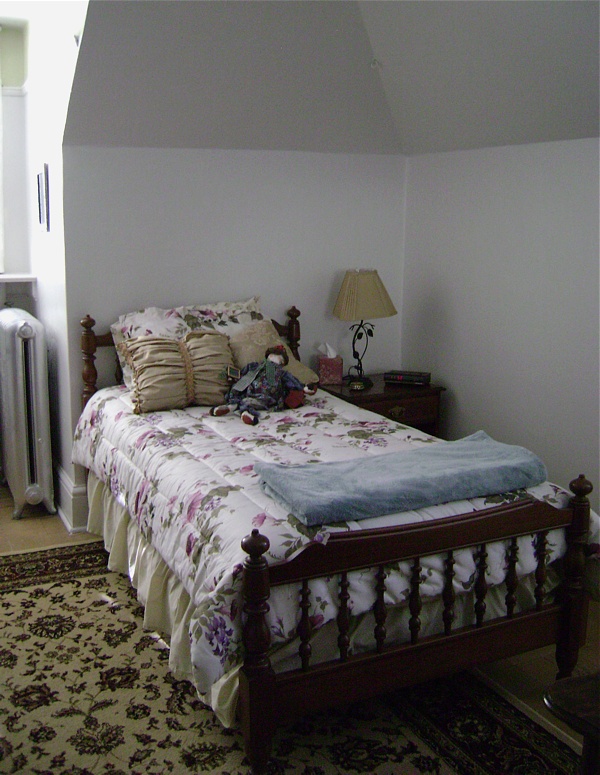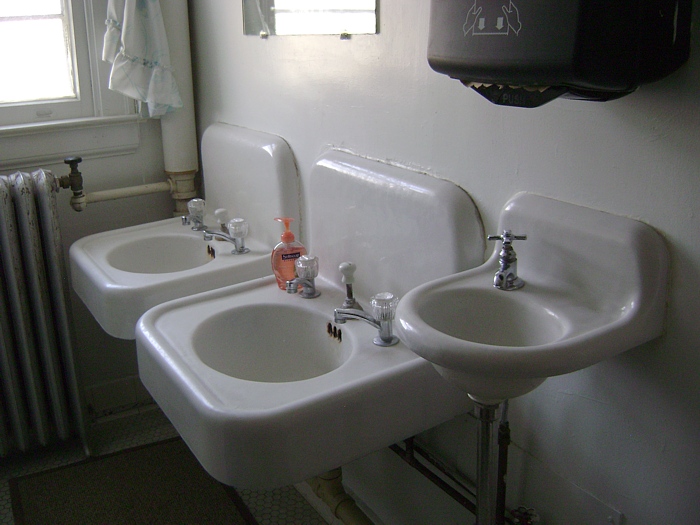|
Helena
YWCA, Independent -
A
Brief History of the Helena YWCA
A
NOV. 23 2008 PRESENTATION TO HELENA SOROPTOMISTS
by
Historian Ellen Baumler (1949-2023)
PUBLISHED HERE BY PERMISSION
In 1972, Margaret Freeman, past Executive Director of the YWCA
Independent, Helena, prepared a report tracing the history of
both the international and local organizations. She urged present
and future Helenans to remember that the building the pioneer
members contributed to the community should be considered an
endowment from them to the Helena YWCA.
Margaret Freeman rightly charged future generations of the Helena
YWCA, local businessmen and women, residents of the facility,
and board members to periodically review the beginnings of the
local organization and be reminded of the sacrifices that its
founders made. So it's my job today to follow this charge, keeping
the history of the Helena YWCA alive in the hearts and minds
of our community.
The Young Women's Christian Association began in London in 1855.
Although Christian, it was inter-denominational. Its membership
was open to all - even men could become members. But since it
was a Christian organization, only Christian could serve on
the administrative boards and hold offices. Its purpose was,
and is today, "to draw together women and girls of diverse
experience and faiths to open their lives to new understanding
and deeper relationships in order that they may struggle for
peace and justice, freedom and dignity for all people."
The YWCA movement came to New York City and Boston where women's
residences opened in 1858. The first female boarding houses
for students, teachers, and factory opened workers in NYC in
1860. This was the beginning of the industrial revolution when
and a time women's roles were changing. Factories began baking
bread, processing food, making clothes, and even laundry services
were becoming industrialized. These were formerly women's activities,
and with the rise of factories, women began to move from home
to the cities to work in these new industries. Young women who
left their families to work in cities needed decent, safe places
to stay and wholesome but inexpensive meals. The Y provided
this, filling an important niche. By the 1870s and 1880s, Y's
had expanded their concerns for young women and offered occupational
classes.
In 1890s, the first African-American branch opened in Dayton
Ohio, and the YWCA established Traveler's Aid, and saw that
chaperones on ocean liners were in place to protect women passengers
in steerage.
In 1909 YWCA's International Institutes featured bilingual instruction
to help immigrant women learn English and better adjust.
Throughout its history, the YWCA has been at the forefront in
major pioneer movements in the US, including race relations,
labor union representation, and the empowerment of women.
Now, for the more local story….. There is a certificate
- from the YWCA, signed by the National Board President, dated
October1906. This document notes that the University of Helena
is a charter member of the YWCA. I am not sure what that means,
nor what the Univ. of Helena was, but it is clear to me that
there was some movement toward the establishment of a local
YWCA well before the accepted founding date of 1911.
There was at this time in Helena no social agency to which a
girl from out of town could apply for help in finding housing,
information, or advice. This came to the attention of Dr, Maria
Dean. She was the 27th physician licensed to practice in MT
upon statehood in 1889 and the first woman to receive a medical
license. She took her medical training at a time when there
was blatant prejudice against women and overcame the tremendous
odds graduating from medical school. It's important for us to
remember today that by 1900, the average lifespan was 50 years,
and one-fourth of all children born died before age 5. Medicine
was not so much a practice of science as a practice of healing
and compassion. And at this Dr. Dean excelled. During her lifetime
she was an advocate and spokesperson for all women. Her medical
practice was devoted to the diseases of women and children.
She was on the original board of St. Peters hospital back in
the 1880s and tirelessly worked for better medical facilities
and funding. She was a proponent and a founder of the Mountain
View School for Girls, making sure that young delinquent girls
were moved from the industrial school at Miles City - which
was originally for both girls and boys. And she was the driving
force behind the early membership in Helena YWCA.
So there must have been some activity prior to 1911, but we
do know for certain that in Jan. 1911, the first members elected
officers, adopted a constitution, and appointed standing committees.
The aim of the local organization was "to promote the moral,
spiritual, intellectual, and temporal welfare of young women
and to provide them with a home." Two young women from
every church in Helena, including the Temple Emanu-El, were
appointed to solicit members. By the end of March, 300 members
had paid their dues. The Finance Committee raised funds and
in May rented space in the Electric Block - which stood across
from the Montana Club where the parking garage is today. The one
rented room served as an office, lounge and reading room. Dr,
Dean hired the first secretary-Frieda Fligelman-some of you
may remember her and for those of you who don't, she was one
of Helena's most beloved characters and a prominent member of
the Jewish community. It was Frieda's job to find safe lodgings
for girls and women, collect information, and counsel girls
away from home. Clientele included working women such as teachers,
stenographers, telegraph operators, women seeking employment,
particularly students at the business college, and young girls
who came from rural areas to attend high school. The Y quickly
outgrew this temporary space. On Aug 10, just a few months later,
the Y moved to the large house at 220
5th Avenue, a large Second Empire-style house off courthouse square.
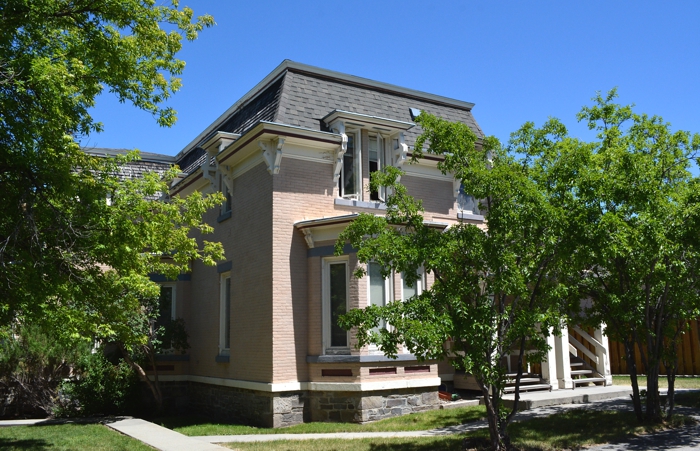
At the time
it was owned by the widow of dentist Frank Norris. Mrs. Norris
operated it as a boarding house. It was partially furnished
- two parlors, dining room, kitchen, pantries, bathroom, 9 sleeping
rooms. The next month, in Sept. 1911, a cafeteria opened in
the house. It was open to the public and quickly became a mainstay
among many in the community.
The organization incorporated in 1912 and when it came time
to affiliate with the national organization, the members chose
to be an independent organization because at that time, the
YWCA specified only Christian members could participate in the
management of the chapter. Some of the pioneer women involved
in the inception of the Helena YWCA were of divergent faiths,
in particular Frieda Fligelman, who, as secretary, had already
done tremendous work for the Helena Y. Although the rules have
since changed and the YWCA boards now welcome all faiths, according
to a visiting National Advisor in 1972, Helena remains the nations'
only YWCA Independent. However, Helena has always been on good
terms with the national organization.
In 1916 the Y moved from Fifth Avenue to 417 N Benton, a large
house owned by John Sanford and Christmas Gift Evans. This became
the new quarters The cafeteria also operated in this building
and there were an average of 19 women and girls in residence.
The house no longer stands.
During this period when the Y was on Benton Avenue, Denver capitalist
John H. Empson-who had considerable Helena investments-became
a regular customer at the cafeteria and became very interested
in the Helena YWCA. His wife was also involved in the Helena
Y.
In
1918, Empson donated the corner lot at Placer and N. Park along
with $25,000. But he stipulated that he would withdraw his offer
if an equal amount could not be raised in 30 days. Businessman
J. E. Bower, whose wife was very involved in the YWCA, took
up the challenge and personally visited Helenans who he thought
had an interest in the project. He secured $37,000 in one day,
and rancher A. B. Cook donated at 8-foot strip of land adjoining
Empson's property on the north, making room for a large structure.
Under the leadership of the association president Mrs. A. K.
Prescott, (Mary), ground was broken in May of 1918, and the
present building was completed Feb. 19, 1919. Dr. Dean lived
to see this dream come to fruition, but she died a few months
later in May of that same year. The cafeteria operated on the
ground floor for many years, and throughout its long history,
the home has provided shelter for hundreds of women. It was
listed on the National Register of Historic Places in 1984.
So many women-and men-over the years have contributed time,
hard work, and funds to keep the organization viable. The first
board members rolled up their sleeves and scrubbed floors and
painted woodwork to make a comfortable homey place for the first
residents. That energy continues to transcend the century, and
extends to the no less energetic women of today who recently
rescued the historic facility from passing out of the organization's
ownership, thus preserving its original function.
Among all the impressive, vital members who have contributed
to the Helena YWCA, it seems necessary to mention Mrs. Harry(Adelaide)
Child-the former Adelaide Dean was Maria Dean's sister-who was
chairman of the Finance Committee during all the early fund-raising
years. When John Empson made his generous donation in 1918,
he also stipulated that the when the building was finished and
furnished, there was to be no debt remaining. Of course, there
was. Adelaide Child was the financial rescuer during this challenge
and during other trying times when the Y ended up in the red.
Her personal contributions offset the deficits many times over,
and they amount to the largest made to the YWCA Independent.
Finally, I'd like close with a word about Mary Prescott, who
was one of the founding members and president during the building
of the current home. But you may not know that she was the wife
of Alonzo Prescott, Montana's first tombstone maker. That is
a story in itself….
Mary Prescott was a beautiful, soft-spoken woman who hardly
ever raised her voice in anger. She raised five children, and
during those busy years, she was always active in the community.
She held her own as the first woman to serve on the Helena Public
School Board and was on the first board of the Montana Children's
Home, today Shodair Hopsital, and for thirty years one of her
jobs was to sign adoption papers for children of the home. She
and her husband gave the land upon which the old Shodair Hospital
on Helena Avenue sits. Mary Prescott was a treasure to the community
and when she passed away in 1934, the entire community mourned
her death.
Among the clippings and personal items her daughters found is
one saying that I want to leave you with today. This seems to
apply very well to the long history of the YWCA and to all those
whose well directed energy have made a difference, past and
present. It reads:
"One ship sails east, another west, propelled by the selfsame
blow
It's the set of the sails and not the gales that bids them where
to go."
Keep up the good work!
|



